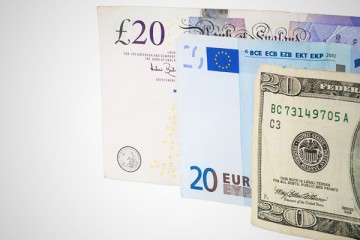What next for Pound Sterling exchange rates?
A look at the devalued Sterling and how this could impact UK business growth and confidence in an already uncertain environment
Written on 3 November 2016
The UK awaits a difficult period ahead as the new Tory government gear up for the invocation of Article 50 – the official framework for leaving the EU.
Sterling exchange rates continue to be driven by economic sentiment and political uncertainty, and as witnessed since the vote in June, positive economic data is having little impact in bolstering the value of the Pound. What many need to consider at this early stage is that Brexit is yet to unravel in any coherent form which puts the Pound’s sentiment in further negative territory.
In the meantime, the UK remains a member of the EU until at least 2018/19, with Brexit negotiations set to begin by March 2017. It’s quite clear that the government are struggling to encompass a strategy for the UK which only exasperates the uncertainty amongst investors and businesses alike. As it stands, the Pound sits at 1.10 against the Euro and 1.22 against the US Dollar. With time running out before the UK begins its official departure from the EU, there are many reasons to assume further losses could present themselves in the weeks ahead.
It remains difficult to predict where exchange rates will be by the time Brexit negotiations begin, but assuming Theresa May invokes Article 50 in March, GBP/EUR exchange rates could hit parity (1:1) whilst GBP/USD exchange rates could fall to 1.10. Why is Article 50 such a concern to markets? Look no further than CETA, the EU-Canadian trade deal which provides a good insight into just how difficult negotiations will be for the UK.
But there are other forces at play that could impact Sterling exchange rates in the weeks ahead, the US economy is screaming out for the FED to raise interest rates at its December meeting, just weeks after the US elections. And what can be said for the cheaper Pound? Yes, British exports and foreign investment will benefit but as a net importer, it will be the consumer that bears the brunt of more expensive goods.
How low can the Pound go before consumers are not willing to pay through the roof for luxuries such as petrol and smartphones? More importantly, how will this impact UK business growth and confidence in an already uncertain environment?
Article 50 – Pound Sterling to remain under pressure
With Theresa May’s announcement of Article 50, another steep decline in the Pounds value could emerge as markets are met with the real uncertainty of Brexit and businesses begin to take measures to protect their interests. As highlighted above, GBP/EUR parity could well present itself which in reality, could be the beginning of much less favourable rates.
But this is just the beginning of the end of the UK’s membership with the EU, two years of negotiations must follow in which every member state must agree over the ratification of any deal. The Canadian-EU deal (CETA) took 7 years in the making and almost collapsed earlier this month, as tiny Belgium state Wallonia were unwilling to sign off their approval.
The UK will have to go through similar challenges within its 2-year framework, with the remaining 27 members able to veto any post-Brexit terms. In addition, the UK must allow for free movement of persons if it wishes to access the single market, a trade-off the UK economy may have to comply with for its huge financial sector.
But whatever the outcome, the two years of negotiations that follow Article 50 will be difficult and Sterling exchange rates could remain on the lower end for some time. That being said, there are steps that can be taken to mitigate risk and provide peace of mind for those buying foreign currency.
A forward contact option could be ideal for foreign currency buyers
It could well be that the UK is presented with a bespoke deal with the EU, or a transitional period in which the UK withdraws its membership from the EU in stages. These scenarios of course could offer Pound strength, providing more favourable rates of exchange for those buying large sums overseas. But this highlights the unpredictability of Sterling exchange rates, under normal market conditions one could look to economic data to form an outlook of the UK economy.
But these are not normal conditions and Sterling is being driven by political uncertainty, making it increasingly difficult to predict which way exchange rates will sway. With this in mind, those looking to buy property overseas for example, may wish to look at a contract option in the event rates move further against you.
A forward contact works by locking in current rates of exchange for a period of up to 24 months. An ideal solution that fits nicely with the timeframes of Article 50. A currency broker will provide you with a rate of exchange and a period in which the transfer is eligible, in the event further falls in the Pounds value materialised, you could purchase your currency at any given time within the contract period.
Speak to a currency broker today if you’d like to learn more about a forward contract, with further falls in the Pound expected this option could provide peace of mind during this particularly choppy period. You can view live exchange rates at http://www.currencies.co.uk/live-exchangerates >



